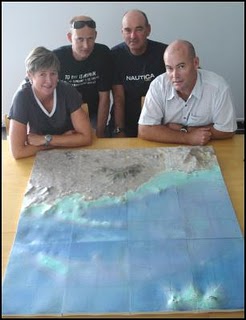![One of the ever-increasing DIY designs for COVID-19 face shields [Source: Fabbaloo]](https://fabbaloo.com/wp-content/uploads/2020/05/image-asset_img_5eb067e95e6ba.jpg)
One of the ever-increasing DIY designs for COVID-19 face shields [Source: Fabbaloo]
In recent weeks we’ve been avalanched with news about the 3D print world’s reactions to the COVID-19 crisis.
After seeing announcement after announcement I’ve begun to see some patterns that may reveal new knowledge about 3D printing technology. Of course, many readers will think some of these are obvious, but I believe these will actually seep into general consciousness and become reality for the foreseeable future. In the future, these may not be debated.
You Really Can Manufacture With 3D Printing
During the crisis many 3D printing companies stepped up to provide what they could to aid efforts. Many 3D print companies simply attempted to organize their networks to perform one task or another, but a few did things quite differently.
I’m specifically thinking about the work by Photocentric and Formlabs. These two companies, in a very short time period, put together programs to mass produce needed items at relatively high volumes.
Photocentric, for example, proved they could, with only their own in-house equipment, produce over half a million ventilator valves per week. Formlabs is producing a million test swabs per week on their equipment.
Both companies worked with healthcare officials to ensure the materials and process used to produce the items were suitable for actual medical use. This is quite different from random folks designing “something” and producing it en-masse, whether it be useful or not.
The result here was that it has been proven to the world that at least some vendors and technologies are able to produce actual end-use products at high volumes in a very short time period. Traditional manufacturing could clearly make more units per time, but could not be set up as fast as 3D printers that can produce “anything” when supplied with a 3D model and materials. 3D printing can fill the manufacturing gap between initial need and full-scale production.
Distributed Desktop 3D Printers Could Be A Major Resource
There are likely something close to a million desktop 3D printers distributed around the world these days, and most of them are operational to some degree or other. One thought being pursued by some is to mobilize large groups of them to produce needed parts. The idea is to achieve volume production through massive parallelized 3D printing.
For example, if one printer takes an hour to produce a part, that’s not very fast. But if 100,000 distributed machines did that every day there would be 2.4M parts by sundown, and almost 18M parts by week’s end.
That’s massive. But unfortunately it’s not actually happening.
While these distributed machines COULD be a resource, I don’t think they are being used in this way due to insufficient coordination. There are plenty of folks 3D printing “something”, but it’s not clear whether these are the truly needed parts, nor whether they’re made of the correct materials.
What’s needed to activate this concept is some type of recognized central authority through which certified work could be dispatched properly. There are a few companies adapting their systems in this direction, but it’s just not widespread.
For example, there seem to be dozens of designs for face shields floating around. Which is the correct one? Or the best for your machine? Or the one that’s certified by an authority? How many more face shield designs do we need?
How many designers are still designing new types of face shields to make it even more complex to find a usable design? We need to coordinate efforts more centrally to optimize production, which is what actually counts most in this situation.
I believe systems and processes to address these coordination needs will appear after the crisis, and perhaps I’ll write more of my thoughts on this in a future post.
Leave The Complex Manufacturing To Actual Manufacturers
Many 3D print installations are quickly producing needed parts to address the crisis. However, after an initial learning period, it appears that most have now realized that it is essentially impossible to produce most types of medical equipment components on common 3D printers due to limitations in resolution, biocompatibility, speed and especially material type.
In the end I realized the production of complex devices such as ventilators is best left to the manufacturers who know how to make them. Almost all DIY efforts now focus on making face shields, which are about the only item a typical 3D printer could usefully produce for the healthcare workers.
Once the traditional manufacturers tune up their production lines to make the needed parts, we will have a much stronger flow, and at lower cost.
Designs Count For Everything
If we really wanted to make more of the complex devices, there are some 3D printing technologies that could indeed help as the proper materials and processes are quite possible.
Why don’t these parties make these parts?
Because they don’t have the designs!
The designs are “in jail” at the original manufacturers and cannot be accessed physically, digitally or legally. If this is indeed a crisis, such designs should be deployable to more parties who can quickly produce them for the original manufacturer. We would likely need some type of legal change to intellectual property rights to allow this to happen, and I don’t see that happening, aside from some emergency measures.
Some 3D printing technologies could help, but they can’t because the designs count the most.
That’s my thoughts as of today. But I have a suspicion we will learn a lot more in coming weeks and months.

